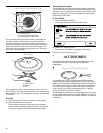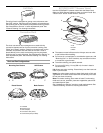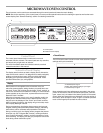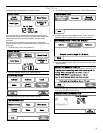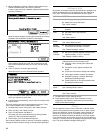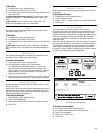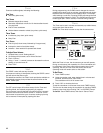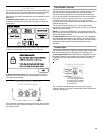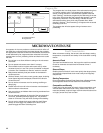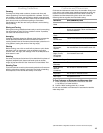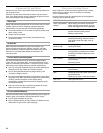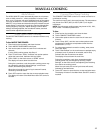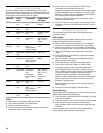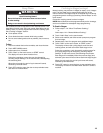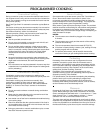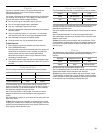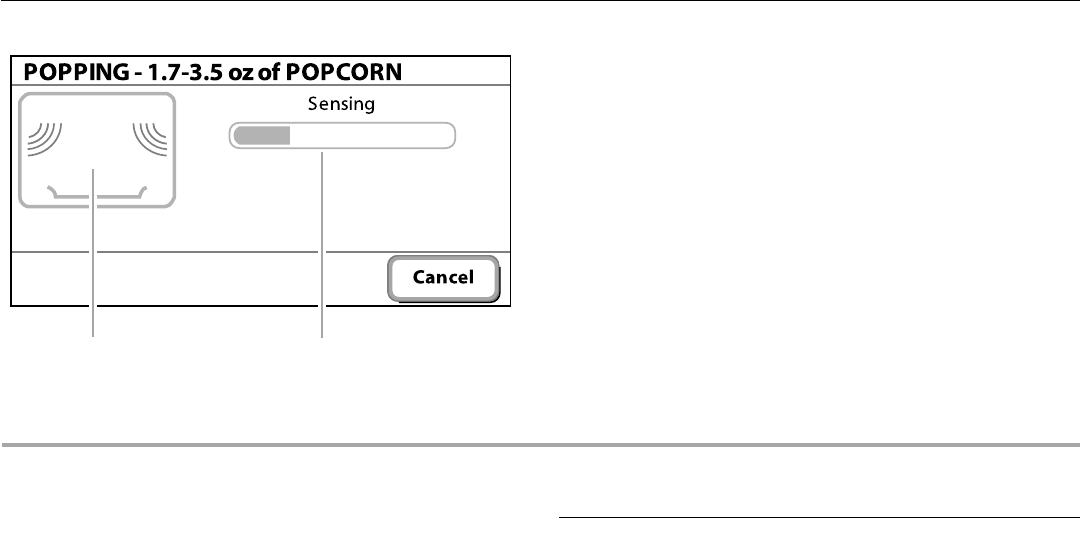
14
Progress Bar
The progress bar is a visual picture of the estimated running time
of a sensor cooking cycle. It will appear at the beginning of
sensor cooking functions. A horizontal bar appears below the
word “Sensing,” and shows progress by the darkening of the bar
left to right. Some time after the progress bar appears, it may be
replaced by “Maximum Time Remaining” indicator and the
estimated remaining time, which may fluctuate often. When
sensing is finished, “Time Remaining” will appear with the actual
remaining cook time.
The progress bar will also appear during microwave oven
preheating.
MICROWAVE OVEN USE
A magnetron in the oven produces microwaves which reflect off
the metal floor, walls and ceiling and pass through the turntable
and appropriate cookware to the food. Microwaves are attracted
to and absorbed by fat, sugar and water molecules in the food,
causing them to move, producing friction and heat which cooks
the food.
■ Do not lean on or allow children to swing on the microwave
oven door.
■ Do not operate microwave oven when it is empty.
■ The turntable must be in place and correct side up when
microwave oven is in use. Do not use if turntable is chipped
or broken. See “Assistance or Service” section to reorder.
■ Baby bottles and baby food jars should not be heated in
microwave oven.
■ Clothes, flowers, fruit, herbs, wood, gourds, paper, including
brown paper bags and newspaper, should not be dried in
microwave oven.
■ Do not use the microwave oven for canning, sterilizing or
deep frying.
■ Paraffin wax will not melt in the microwave oven because it
does not absorb microwaves.
■ Use oven mitts or pot holders when removing containers from
microwave oven.
■ Do not overcook potatoes. At the end of the recommended
cook time, potatoes should be slightly firm. Let potatoes
stand for 5 minutes. They will finish cooking while standing.
■ Do not cook or reheat whole eggs inside the shell. Steam
buildup in whole eggs may cause them to burst. Cover
poached eggs and allow a standing time.
Food Characteristics
When microwave cooking, the amount, size and shape, starting
temperature, composition and density of the food affect cooking
results.
Amount of Food
The more food heated at once, the longer the cook time needed.
Check for doneness and add small increments of time if
necessary.
Size and Shape
Smaller pieces of food will cook more quickly than larger pieces,
and uniformly shaped foods cook more evenly than irregularly
shaped food.
Starting Temperature
Room temperature foods will heat faster than refrigerated foods,
and refrigerated foods will heat faster than frozen foods.
Composition and Density
Foods high in fat and sugar will reach a higher temperature, and
will heat faster than other foods. Heavy, dense foods, such as
meat and potatoes, require a longer cook time than the same size
of a light, porous food, such as cake.
A. Cooking animation
B. Progress bar
A B



